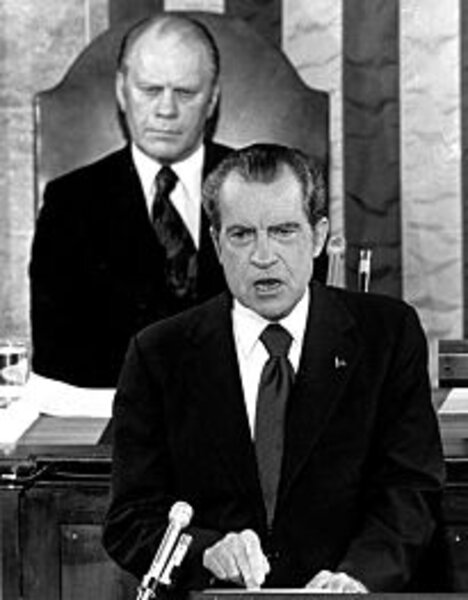America's welfare state accelerates
Loading...
Perhaps in the next few months, the US economy will turn a corner. The "new normal" will be up, or at least flat, rather than down. Americans will breathe a sigh of relief that they survived the Great Recession – or whatever we decide to call this period.
But something else is happening far less visibly. The creep of the welfare state is accelerating.
One way to measure this is to compare the share of personal income that comes from government payments, like Social Security, Medicare, and unemployment insurance. In the May data, which the Commerce Department reported Friday, that share reached a record 18 percent, up from 16 percent in January.
That means that for every dollar Americans earned last month, 18 cents came courtesy of Uncle Sam. That's the highest share in 50 years of federal record-keeping. At the same time, the share of total personal income from private-sector paychecks has reached a new low: 43 cents.
Do the math
To some extent, this phenomenon is mathematical. Total wages and salaries usually doesn't grow very much in recessions because fewer people are working. In the first quarter, they actually fell from a year ago – the first year-over-year decline since 1958. At the same time, governments tend to boost spending in recessions.
May's increase in government benefits was especially high because of one-time payments. Strip them out and May comes in with the second-highest share on record after April, which was at 16.9 percent.
Demographics plays a big role, too, as America's growing share of retirees begin to draw on Social Security and other benefits.
Government's growing role
But none of this fully explains the long, slow upward creep of the welfare state. In May 1959, government benefits accounted for just over a nickel (5.7 cents) of each dollar Americans earned, while private-sector wages and salaries accounted for 54.8 cents. In May 2000, they were 12.6 and 47.7 cents, respectively. Today, they're at 18.0 and 43.1 cents.
Presidents who start in recessions and end in prosperity can see those trends reverse. Under Reagan, government's share fell from 11.9 to 11. 2 cents; under Clinton, it plunged from 14.0 to 12.7 cents. But they're often followed by those who bump up the levels to new highs when a new slump hits, such as Nixon/Ford (7.6 to 11.9 cents), George H.W. Bush (11.2 to 14.0 cents), and George W. Bush (12.7 to 16.0).
Which kind of president will Obama be?
If the economy rebounds and he keeps a reasonable rein on government spending, he could look like a responsible husbander of government resources, at least by this measure. If the economy continues to scrape along the bottom for months on end – or it rises only to fall later under his watch – the final tally could look much worse.
______________
– Don't forget to Twitter us.





